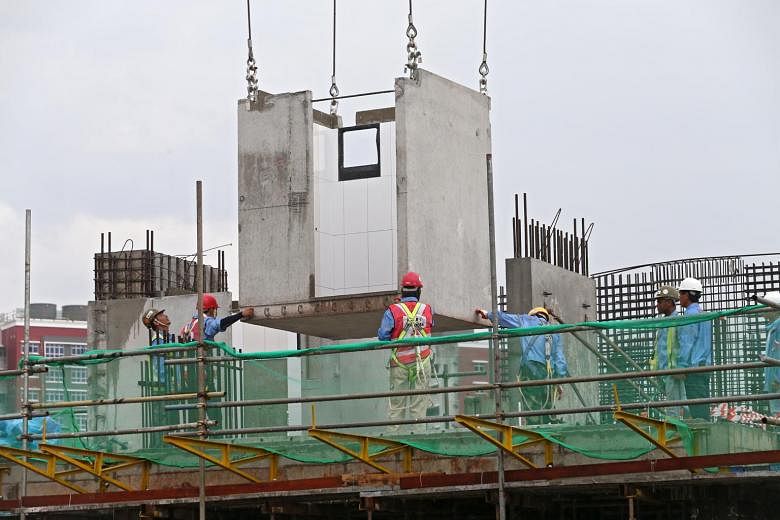SINGAPORE - Construction companies and government agencies will get a leg up in adopting new technology as almost $300 million will be injected into two productivity schemes.
The sum brings the BuildSG Transformation Fund (BTF) to about $770 million in financial aid for the construction industry.
In addition, a new scheme will make it cheaper to hire workers for off-site prefabrication work. Called the Off-site Construction Special Scheme (OCSS), it will be introduced in the second half of 2019.
These moves to support more companies in their transformation journey, and shift the industry towards adopting productive technologies, were announced by Minister of State for National Development Zaqy Mohamad in Parliament on Wednesday (March 6). He was speaking during the debate on his ministry's budget.
Of the $295 million, the Productivity Innovation Project scheme will receive $200 million to help companies with solutions that offer at least a 30 per cent improvement in site productivity.
Examples of technologies supported by the scheme are prefabricated bathrooms, where the structure is made off-site, and self-compacting concrete, which is more efficient than using normal concrete.
The remaining $95 million will go to the Public Sector Construction Productivity Fund (PSCPF) to coax government agencies to adopt Design for Manufacturing and Assembly (DfMA) technology for their construction projects.
DfMA is a highly productive method of construction which moves traditional on-site work into off-site factory environments, for instance, in the building of bathroom units. The public sector is expected to contribute about 60 per cent of projected DfMA demand from this year to 2023.
Mr Zaqy said that since the PSCPF's launch in 2017, most of its initial $154 million have been committed to various agencies, and the new $95 million will sustain the effort.
There will also be a change in manpower policy to lower the cost of hiring workers in productive technologies like the DfMA.
The OCSS will let construction companies hire workers at lower levies at the 15 DfMA facilities, potentially saving them between $250 and $300 per worker on levies.
Mr Zaqy also said his ministry is working towards "progressively reducing the MYE quota for on-site works, and eventually (removing) the MYE framework altogether".
The MYE, or Man Year Entitlement, framework refers to the total number of foreign construction workers allocated to a contractor for a specific development.
He added that the Building and Construction Authority will consult the industry in working out changes to the MYE framework.
When contacted, Mr Kenneth Loo, president of the Singapore Contractors Association (Scal), said he is in favour of the OCSS.
"We welcome the scheme as it supports industry efforts in the shift towards DfMA. This will help to shift more work from on-site to off-site locations while raising productivity and lowering cost," he said.
The two latest initiatives are part of an industry-wide push to adopt new technology.
For example, the National University of Singapore will pilot an inter-disciplinary module on prefabricated pre-finished volumetric construction (PPVC) later this year. PPVC allows building components to be prefabricated under controlled factory conditions and assembled on-site like Lego blocks.


